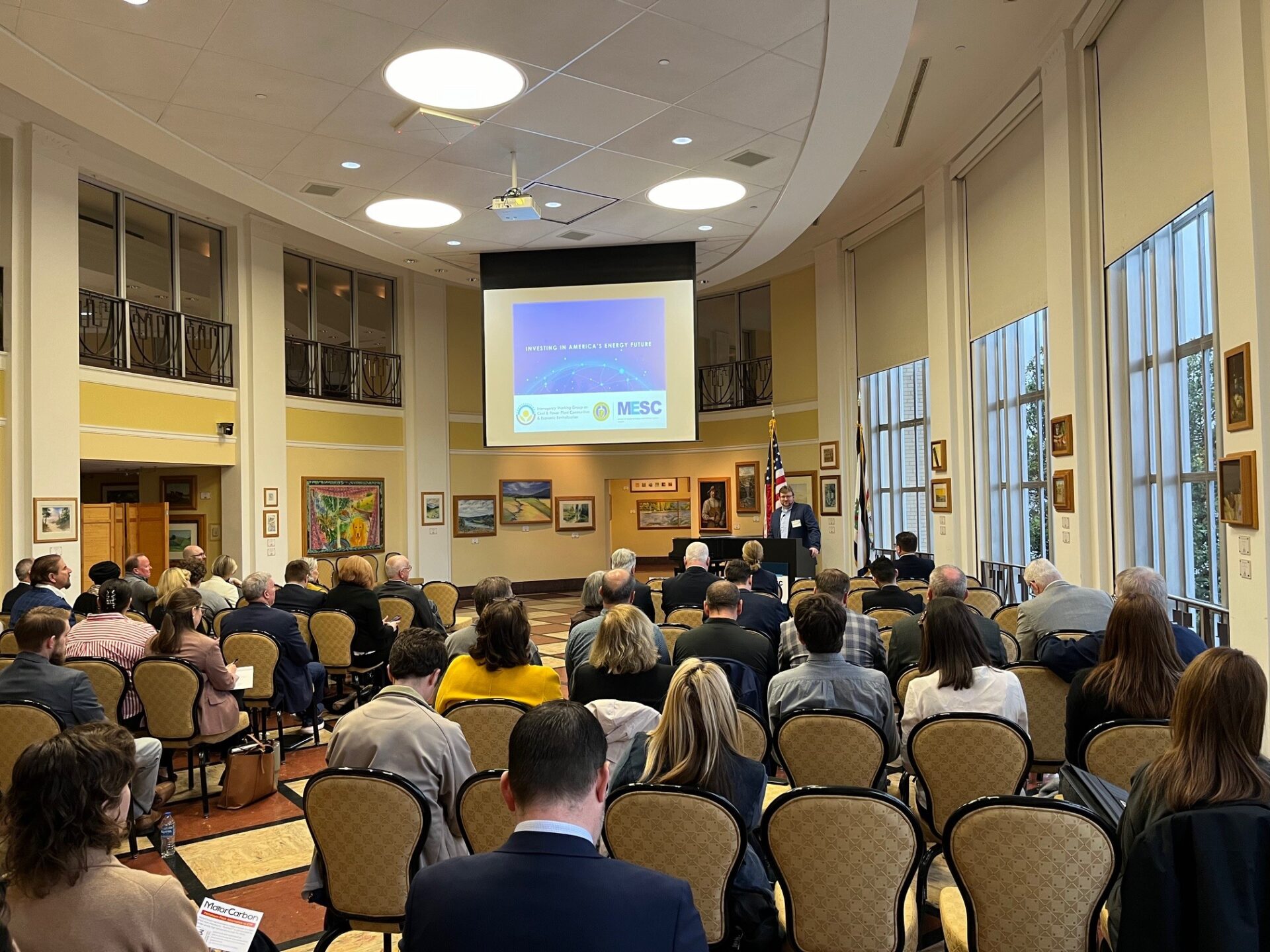West Virginia is seeing a boom in low and no-carbon manufacturing, thanks to tax credits and other federal programs designed to spur investment in energy communities.
Curtis Tate spoke recently with Brian Anderson, a senior adviser on energy communities at the U.S. Department of Energy, at the University of Charleston.
This interview was edited for length and clarity.
Tate: What role can West Virginia play in a new, cleaner manufacturing economy?
Anderson: I think it’s a critical point in time, to reinvest in our manufacturing infrastructure across the United States, and certainly here in West Virginia. West Virginia has a huge opportunity and an economic base that was built on manufacturing in the last century. And so now we have the opportunity and the attention of the manufacturing sector and private investors to really leverage the existing assets. You look at the Boston Metals and Form Energy investments in Weirton at the former Weirton steel mill.
Yesterday, we announced from the Department of Energy $75 million in conjunction with the private sector Constellium investment of upgrading their melt furnaces, which were brought into service in 1957. To both improve safety and the safety and health of the workers, but then bring them to the modern era to where they’re smart melt furnaces. And they can burn clean natural gas or clean hydrogen once they get a hydrogen supply that in conjunction with the hydrogen hub investment here in the region are to both out of the Office of Clean Energy Demonstrations. And then even just last week, we announced $129 million of federal cost share to a project in Nicholas County, a solar project which would be a tremendous boon to the local economy in terms of their tax revenue, and the jobs associated with building and constructing that project. And that project’s working with the building and trade association and developing a displaced co-worker, a training center.
Tate: What brings you to Charleston?
Anderson: What we’re meeting here in Charleston today to discuss is a tax credit called 48C. Section 48C from the IRS is a 30 percent tax credit to manufacturers who are investing in the clean energy manufacturing space. So specifically, not just to install, say solar or wind, but to then build new manufacturing facilities that will supply those supply chains, whether it’s in the battery space for vehicles, or for energy storage, whether it’s making the components that go into a solar panel or wind turbines, or pieces of the electric motor. And so there’s a lot of places in West Virginia where we have the infrastructure that can support it. That’s a 30 percent tax credit on the investment that the company makes in manufacturing in the clean energy space. There’s an earmark, well, it’s not necessarily an earmark, but a floor of this $10 billion tax credit, $4 billion of it will go to energy communities. And so those energy communities, like here in West Virginia, are primed and ready to then take advantage of this manufacturing tax credit. It’s all part of a really coherent industrial strategy to not only invest in clean energy deployment, but to make sure that those clean energy technologies are manufactured here in the United States, and specifically in energy communities around the United States.
Tate: What impact has the Inflation Reduction Act and the Infrastructure Investment and Jobs Act had on these efforts?
Anderson: I’ll say that since the passage of the Inflation Reduction Act, investments in manufacturing in energy communities has now flipped to where energy communities around the country are now the preferable place for the billions and billions of dollars that are being invested today, according to the IRS and Department of Treasury. And a recent study out of MIT and the Rhodium Group shows that every month, there’s about $4 billion of clean energy investments going into energy communities. Before the passage of the IRA, it was about two and a half billion dollars. And so there’s really been an acceleration of manufacturing in energy communities around the country since the passage of the IRA. When you back up to the bipartisan infrastructure law, that was seed money to make sure that facilities like the Constellium facility in Ravenswood have the cost share from the federal government to de-risk new and innovative projects. And so the melt facility in Ravenswood is the first of its kind in the United States where the government partnership helps lower the barrier to the private sector investment. Those two pieces of legislation coupled together, really are helping spur a manufacturing renaissance in the country.
Tate: This is a region-wide push, isn’t it?
Anderson: Secretary (Jennifer) Granholm out of the Department of Energy was in Middletown, Ohio, yesterday at the Cleveland-Cliffs facility where they’re investing. There’s the undersecretary for infrastructure in the Department of Energy. He was in Wabash, Indiana, on a clean, low carbon cement manufacturing facility, again, moving to the next level of technology investing and leading the way internationally in technologies, where the private sector is putting in their investments, de-risked by the government. So the government share is really an opportunity for this region. And another project that was announced yesterday was Century Aluminum, partnering with the Office of Clean Energy Demonstrations for building the first aluminum smelter in the United States in 45 years. It’ll be a state of the art facility across the world. But they’re looking at somewhere in the Mississippi Valley, probably in Western Kentucky as well.
